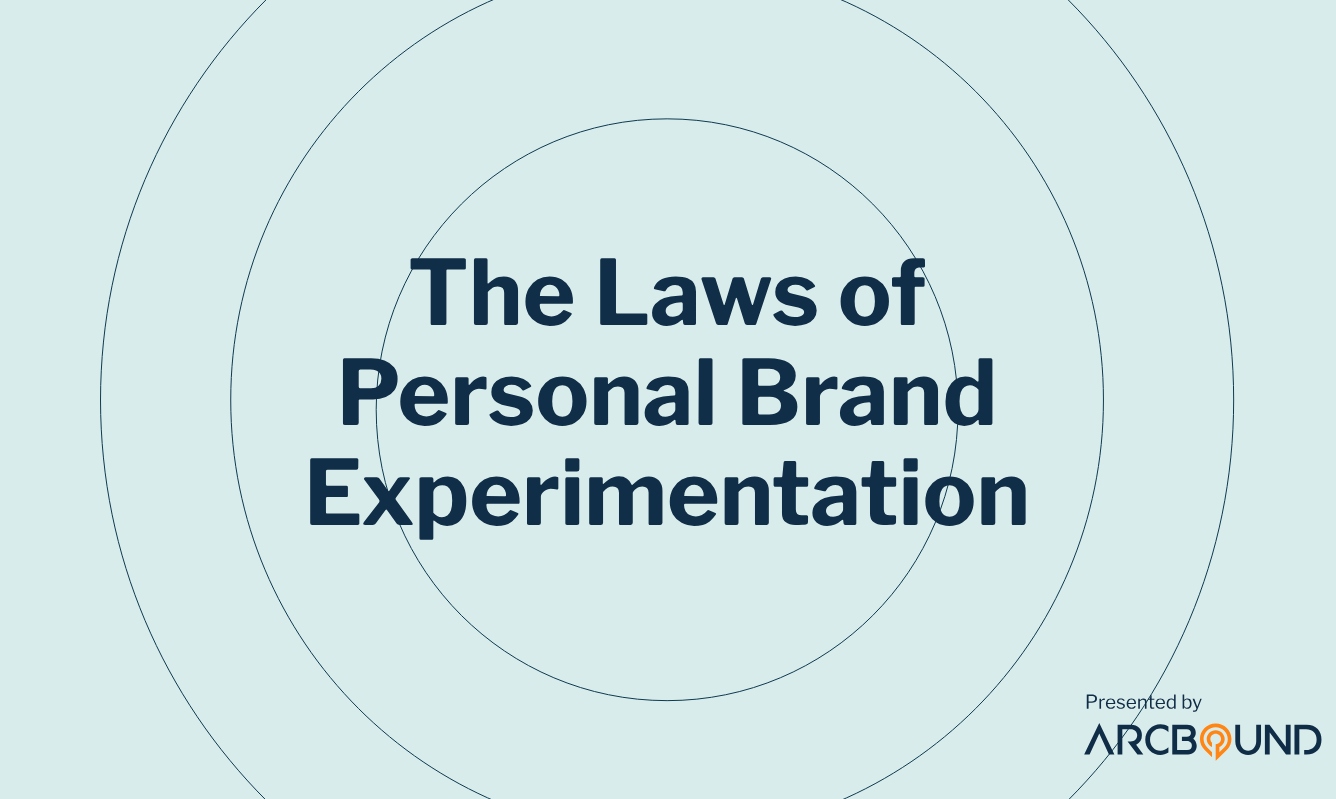The Laws of Personal Brand Experimentation (According to Blaire)

What to consider when determining what’s next
Some people might call me impulsive…
I’ve driven across the country based on instinct alone, let a tattoo artist choose my first ink, and fired off too many on-the-spot emails to count. In other words, I’m not afraid of experimentation. I’m far more likely to go for it than I am to maintain the status quo.
But those of us on either side of the lab table—risk-takers and avoiders alike—can learn something from Blaire Kotsikopoulos, our VP of Client Services. In just under three months, she’s taught me so much about effective experimentation, including the importance of having a control and taking steps to avoid getting burned when testing something new.
While the experiments we’re working with are (mostly) confined to client services, ultimately, they’re about pursuing a big vision one element at a time. With that in mind, I think you can learn a lot from her too, regardless of the hypotheses you’re considering.
So, without further ado, here’s some insight into Blaire’s approach to experimentation:
First, here’s her criteria to determine whether an idea or concept is worth testing at all:
- Is it on brand? Does it make sense given where we are/where we are going?
- Do we have the skills or capability in house?
- Do we have the capacity to do this now?
- Will we be able to “sell it again” if it works?
- Will it get more efficient over time?
If it passes muster, she keeps the following in mind as she experiments:
Stay Genuine
In other words, don’t do anything the best version of yourself wouldn’t do. Experimentation is extremely important when it comes to brand and business growth, but if the strategy doesn’t align with your core values, skip it. In the past, we’ve gone after multiple opportunities as quickly as we could, without considering all the variables. That landed us in a few sticky situations. The same goes for ideas or offerings that don’t jive with our value proposition.
Start Small
Test, reflect, and test again. It’s easy to go all-in when you get excited about a big idea, but before you waste all your powder on it (a Blaire-ism I’ve grown to love), you’ve got to see if it works—and not just once, but many times over. Start with a small and hardy group of test subjects and move forward (or backward, or sideways) based on what you find.
For example, right now, Blaire is running an important experiment that we’ll eventually roll out to all of our clients. Today, we’re testing it on a handful of individuals who were open to being guinea pigs. We’ll use our learnings to expand effectively when the time is right.
Prove Your Concept Before You Sell
All of us want to make money, but you need proof that your product or service is worthwhile before you put it on the shelf. That means in addition to determining if it works (see Start Small), you’ve also got to figure out if there’s a want or need for it, and if you’re the individual or organization to provide it (sometimes soul-searching is part of the experimentation process). Another science- (and sales-) backed tip: make sure you’re reaching out to your ideal clients or customers. They’re the true litmus test.
For example, we’ve got a hypothesis on numerous monetization opportunities and want to provide clients with so much more in that department. But to do it right, we need to finish building out our foundation, so that we can harness its full power when we launch phase two. And before we’ve even started experimenting, we’ve asked around to make sure it’s something clients actually want.
Which laws do you abide by when experimenting?